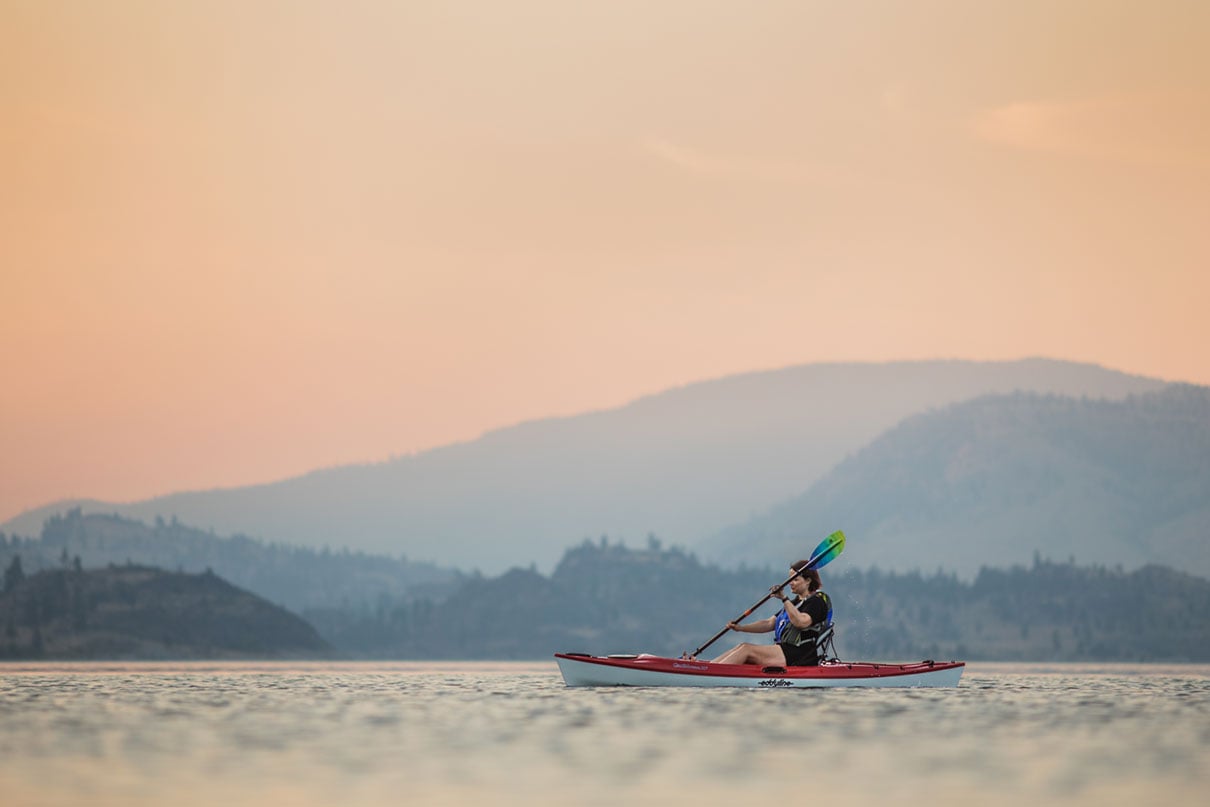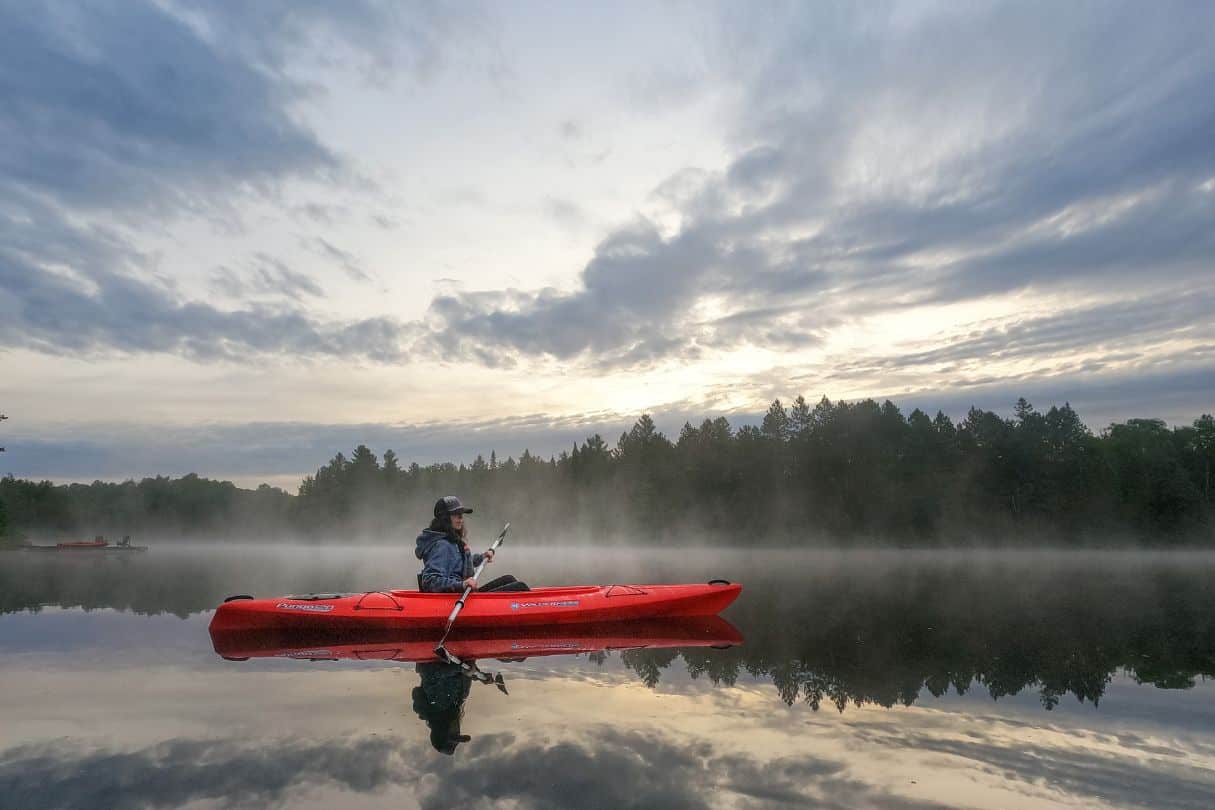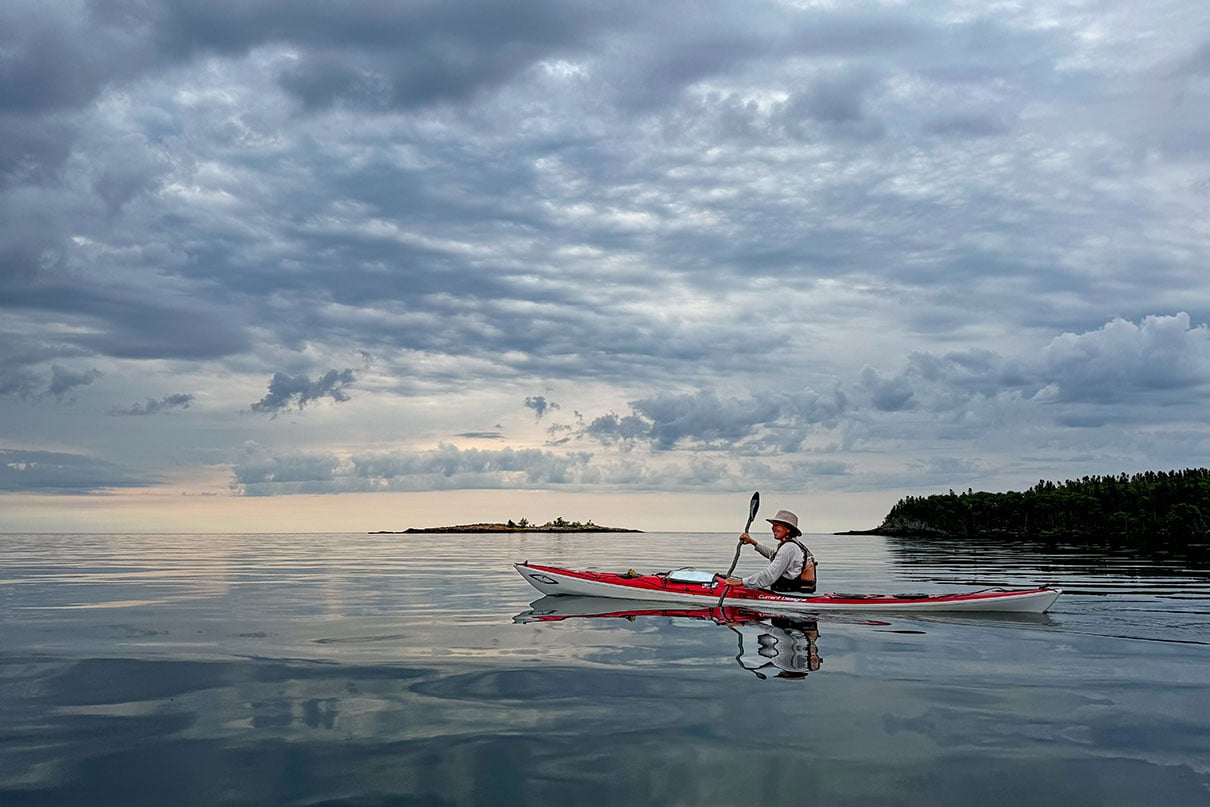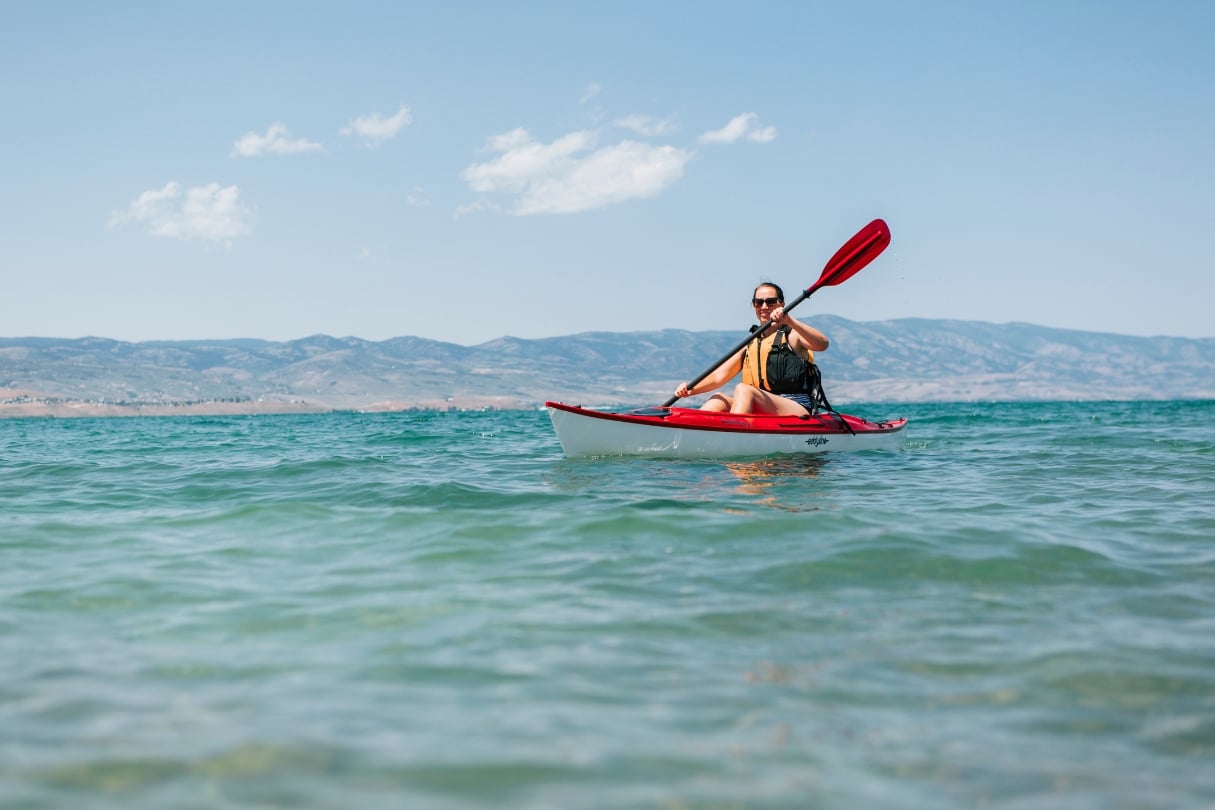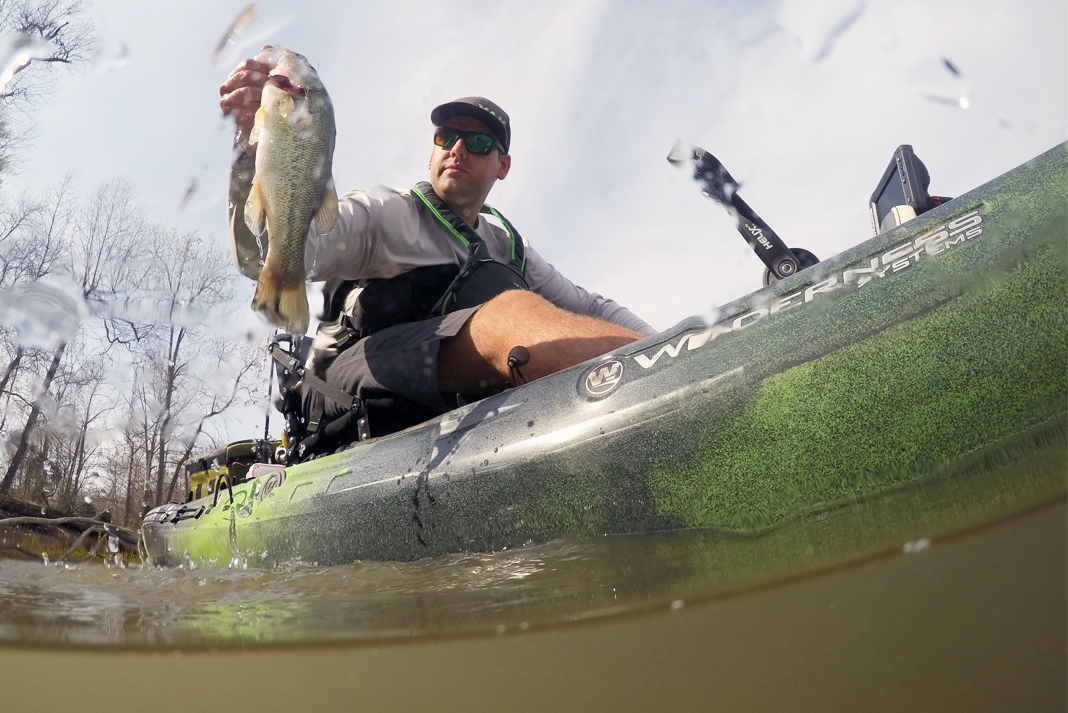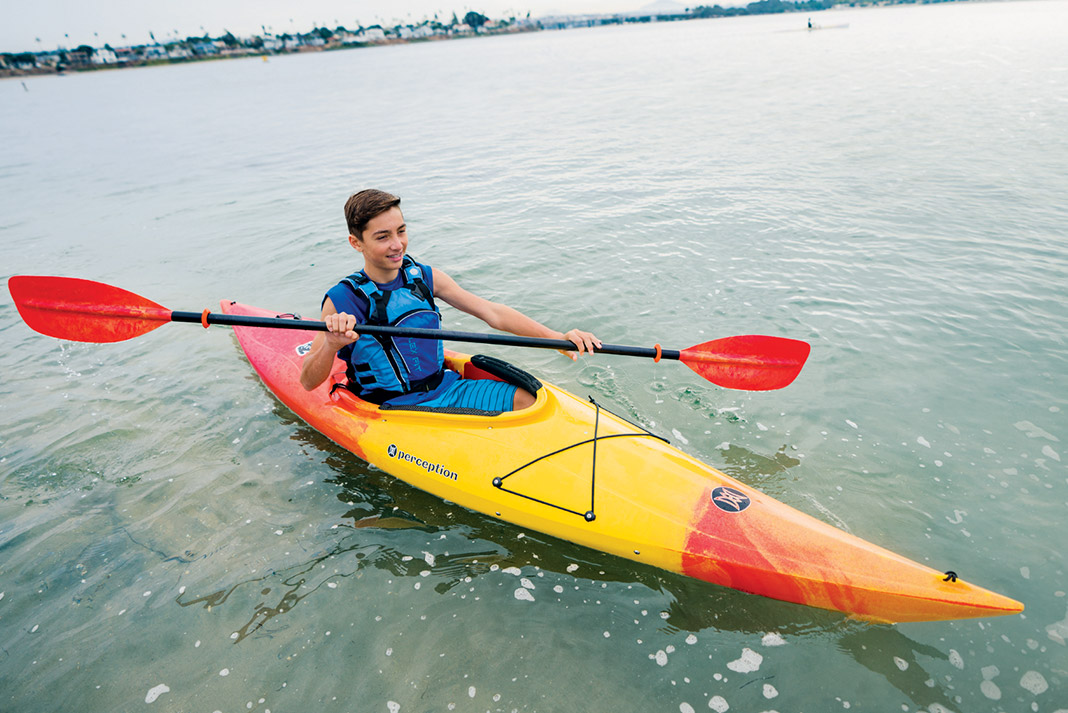The size of a kayak plays a huge role in determining its performance characteristics, and whether it’s the right kayak for you. If you’re wondering, “What size kayak do I need?”, you’re definitely on the right track in finding the perfect boat. Kayak shapes and sizes come in many varieties; the two main variables are length (which determines the overall speed of a kayak, longer is faster) and width (which determines the stability of a kayak, wider is more stable).
Analyzing kayaks from the perspective of these simple values is the goal in choosing the right size kayak for your body type and paddling aspirations. This kayak size guide article provides all you need to know for how to buy the right size kayak.
Kayak sizes
Many first-time paddlers wonder, Do kayaks come in different sizes? And if so, how do I know what size kayak I need? Kayak shapes and sizes are the best way to distinguish between individual boats—and broader categories of kayak styles based on the type of paddling you wish to do. Here is a kayak size guide for the boats most commonly purchased by beginner and novice paddlers.
Recreational kayaks
Recreational kayaks are distinguished by short and wide dimensions, which meet the needs of beginner and casual paddlers in sheltered water conditions. The average kayak size in this popular category of kayaks is 10 feet long by 28 inches wide. These specifications contribute to the stable feel and easy handling of a recreational kayak; while these boats won’t win any races, they’re meant to be maneuverable for beginners with minimal paddling skills.
The smallest kayak size in the recreational kayak category is about six feet; several manufacturers offer cheap sit-on-top models at this length which are meant for children under 12 years of age.
Day touring kayaks
Day touring kayaks are somewhat longer and narrower than recreational kayaks, with an average kayak size of 12 to 14 feet long and 24 to 28 inches wide. If you’re looking for a boat that’s faster and glides more efficiently through the water, as well as feeling somewhat sportier and less like a bathtub, a day touring kayak might be the right size of kayak for you.
Not only do these dimensions create a more efficient boat to paddle, they’re more responsive and better for paddlers who want to develop their skills and progress to more challenging water conditions, or use their kayak for day trips and overnighters.
Touring kayaks
Touring kayaks, also known as sea kayaks, are best described as long and narrow—the nearest match to the original Inuit kayaks of the Arctic. The average size of a sea kayak is 16 to 17 feet long and 22 to 24 inches wide. Sea kayaks are extremely fast and efficient compared to recreational and day touring kayaks. However, they’re also tippier and require some paddling skills to handle safely.
If you’re a smaller person consider the smallest kayak size in this category, which would be about 15 feet by 22 or 23 inches wide, for most efficient paddling. As their name implies, touring kayaks are meant for multi-day trips in more exposed water conditions, including use on the ocean. Investing in a touring kayak should also mean taking certified training to learn efficient paddling and rescue techniques.
Kayak length
Before you ask the question “What length kayak do I need?” you should consider your goals in paddling. Kayak length is directly proportional to speed and handling: A long kayak will be faster and travel straighter than a short kayak; that’s the first thing to remember in choosing kayak length. So, if you’re a novice kayaker wishing to paddle short distances, a short kayak will be easier to handle. But if you want to progress your skills and travel long distances, a longer kayak will be better for you.
Paddling location also matters: smaller bodies of water, especially twisty rivers, demand shorter, more maneuverable kayaks. On the other hand, you will paddle more efficiently over longer shorelines in a longer kayak. A kayak length guide wouldn’t be complete without considering the size of the paddler. Obviously, taller paddlers should choose a longer boat, regardless of the type of kayak, for comfort. Meanwhile, shorter paddlers should choose below-average kayak length to improve fit and comfort in the boat as well as making it easier to handle.
Kayak width
Just like length, the average width of a kayak varies depending on the style of kayak. The width of a kayak is also a good measure of its stability: in general, the wider the kayak, the more stable it will be. So if you’re a first-time kayaker, you will benefit from a wider kayak. However, as your skills progress you may find a wide kayak is cumbersome and less efficient to paddle.
Extremely wide kayaks are actually harder to paddle because it’s more difficult to reach the water with your paddle blades. So choose kayak width carefully, with a mind for your goals in paddling. A wide, stable kayak may be all you need if your aspiration is to paddle casually around the cottage or sheltered bay. However, a narrow kayak will feel sportier as your skills progress if you wish to take the sport more seriously.
Kayak weight limit
The common question, “How much weight can a kayak hold?” is relevant in many ways. To take a step backwards, the weight limit of a kayak is determined by its volume. The larger the volume in the kayak, the greater the weight capacity. Width is a critical dimension in determining weight capacity. Typical weight limits range from 250 to 350 pounds for most average sized kayaks in all categories. While the upper weight limit is obviously important for larger paddlers, it’s also relevant to smaller people.
If you’re small, consider buying a kayak with a lower weight limit; less volume means the kayak will be more efficient to paddle and feel more comfortable for you on the water. Similarly, it’s important to think about whether or not you plan to carry gear for a day trip or overnight trip when considering the weight limit of a kayak.
Kayak weight
Kayak weight is important for two reasons: a heavy kayak feels less nimble on the water and is slower to accelerate and harder to keep moving at a steady pace; and a heavy kayak is harder to lift and carry. The second point is especially relevant to paddlers who want to car-top their kayak or anyone who faces a longer distance from where the kayak is stored to the launch site. The task of lugging a heavy kayak could be an annoyance or an injury waiting to happen.
Like any outdoor equipment, everything else being equal a light kayak costs far more than a heavy one. The average weight of a kayak ranges from 30 to 70 pounds, depending on the style and construction. Recreational kayaks are commonly made of tough—and heavy—rotomolded plastic; this style of kayak frequently has an average weight of 50 to 60 pounds (a light recreational kayak would fall in the 40-pound range).
Similarly, a plastic sea kayak will weigh slightly more, say 60 to 70 pounds for the average length. If you want to get the lightest boat possible consider composite (fiberglass or Kevlar) construction; a day touring kayak of this style would have an average weight of 35 to 40 pounds, whereas a longer composite sea kayak tips the scales between 40 and 50 pounds.
Composite recreational kayaks are harder to find, but one lightweight option is Oru Kayak, which manufactures folding (think origami) kayaks in lengths of 10, 12 and 16 feet from ultralight corrugated plastic.
What size kayak for my height?
Though the vast majority of kayaks will fit a wide range of users, if you’re particularly small (say, below 5’2”) or really tall (above 6’3”) you must be careful in choosing the right kayak size for your height. Obviously, a tall person requires more space in a kayak for their legs and feet. Since a tall person also (likely) has long arms, they will have more control with the paddle and find it easier to use a wider kayak than someone with a shorter torso and arms.
Similarly, a shorter person will benefit from a shorter kayak—something that’s scaled more appropriately to their body dimensions. Higher performance sea kayaks often come in several sizes per model; consider a “low volume” version if you are short.
What size kayak do I need for my weight?
Adding weight to the calculation of kayak size further confounds selection, especially if you’re short but heavy or tall and light. This is where volume (and weight capacity) comes into play. Choose a kayak that fits your body and has a maximum weight capacity that reflects slightly more than your typical payload.
Kayak deck sizes
Kayak deck sizes range from open-deck sit-on-top to partially decked recreational kayaks to fully enclosed sea kayaks. Decks provide shelter from the environment (waves, spray, precipitation and hot sun) but can make a kayak more difficult to enter and exit. Often, your style of paddling will determine the best type of deck to choose. Are you looking for casual paddles in warm water on sunny days? An open-deck sit-on-top kayak is probably best for you. This style of recreational kayak is also preferred for fishing since it gives an angler easy access to their tackle and gear.
A partially decked recreational kayak offers some protection but remains easy to enter and exit. Meanwhile, sea kayaks feature full decks and smaller cockpit openings, which offer the best protection from waves and wind but require some skill to enter and exit. Since this style of kayak is meant for paddling open water, a deck is a critical safety feature in exposed conditions.
Kayak cockpit size guide
Kayak cockpit size varies based on the type of kayak. If you’re wondering how to measure kayak cockpit size, the basic rule considers length and width. A small cockpit would measure about 24 inches long and 18 inches wide (typical of an old-school sea kayak). Nowadays, most modern sea kayaks have more ergonomic, keyhole-shaped cockpits measuring about 30 inches long by 18 to 20 inches wide. Meanwhile, a very large cockpit—the norm on most recreational kayaks—measures 50 or so inches long by 22 to 23 inches wide.
Kayak cockpit size influences two things: how easy it is to enter and exit the kayak; and how much water can come into the boat from waves and spray. Of course, a larger cockpit will be easier to enter and exit; such a feature may be necessary for those who are larger or less flexible.
But on the other hand, that large cockpit will also allow more spray to enter the kayak—or it will require a larger sprayskirt to seal. (A sprayskirt is a nylon or neoprene “apron” that forms a connection between the paddler and the kayak cockpit and keeps waves and spray out of the boat). The smaller the sprayskirt necessary, the better the seal between paddler and kayak.
Best sizes for …
-
Kayak size for beginners
Every new paddler asks the same question, “What size kayak should I get?” Beginners will feel most comfortable in wider kayaks, which are more stable, with widths of about 26 to 32 inches in recreational kayaks or 24 to 26 inches in day touring kayaks.
A shorter length (say 10 feet for a recreational kayak or 13 to 14 feet for a day touring kayak) will be the easiest to handle for those with limited paddling skills. However, if you plan to develop your skills beyond the beginner level you may want a narrower kayak and to make a more significant investment in a day touring kayak.
-
Best size kayak for a 6 ft person
A person of average height, say 5’8” to six feet, will find they fit properly in most average sized kayaks. It’s hard to pinpoint an exact kayak size for this size of person. The typical average length kayaks—8 to 12 feet for a recreational kayak or 12 to 14 feet for a day touring kayak—will work well for a 6-foot-tall person.
The decision ultimately comes down to personal preference so try out as many options as you can—in the conditions you’re mostly likely to be paddling in—to find what’s right for you.
-
For fishing
Wondering how to choose a kayak size for fishing? The best size of fishing kayak is often determined by the environment in which you wish to fish. For example, big water locations, where waves are more likely, require a larger kayak. Shallow water or twisty-turny rivers demand a shorter, more maneuverable kayak.
Choose something in between, say 9 to 10 feet in length with a 28-inch width, if you’re looking for a general purpose fishing kayak.
-
Best size kayak for rivers
Maneuverability is often the main characteristic of a good kayak for rivers, so choose a model with length in mind. Shorter is better when it comes to easy handling and maneuverability. Specialized whitewater kayaks, for example, often measure seven feet or less in length. For a more general-purpose recreational kayak look for something in the eight- to 10-foot range for rivers.
-
Best size kayak for lakes
Because lakes vary in size, from small inland bodies of water to the massive Great Lakes, it’s hard to narrow down a specific “best size kayak for lakes.” However, a good rule of thumb is the smaller the body of water, the smaller the kayak. Or, more appropriately, recreational kayaks are best for small, sheltered lakes; and longer sea kayaks are best for large, exposed bodies of water, such as the Great Lakes.
With appropriate training, day touring kayaks are a versatile option for lakes both small and large, provided they’re used in modest conditions with light winds and small waves.
-
What size kayak for ocean
By definition, a sea kayak is most appropriate for the ocean. These kayaks range from 15 to 18 feet in length and are defined by advanced safety features, such as watertight bulkheads and smaller cockpits to shelter the paddler from adverse weather conditions and wind and waves.
However, a smaller, beginner-friendly recreational kayak may also be suitable for the ocean—provided that the location is sheltered from wind and waves and offers easy access to safe landing sites.
-
What size kayak for child
A six-foot kid’s kayak is a great option for introducing your child to kayaking. However, as your child grows they will require something larger. Often, smaller adult-sized recreational kayaks are perfect for larger children and youth. Consider your child’s weight and choose a kayak according to its weight capacity.
For example, popular six-foot kid’s kayaks have an upper weight limit of just over 100 pounds. If your child is larger (or you want something that your kid can grow into), consider a recreational kayak with modest dimensions, such as 8 feet long and 26 inches wide.
-
What size kayak for 10-year-old kid
Kayak length for kids is tricky because it all depends on the size of the child. Several kayak manufacturers produce cheap, six-foot-long kids kayaks that work great for children under 5 feet tall and less than 100 pounds in weight.
-
What size kayak for 11-year-old kid
If your 11-year-old is taller than 5’4”, they may be able to handle a smaller adult kayak. However, if they’re smaller and lighter they may still prefer the easy handling of a six-foot-long youth kayak.


